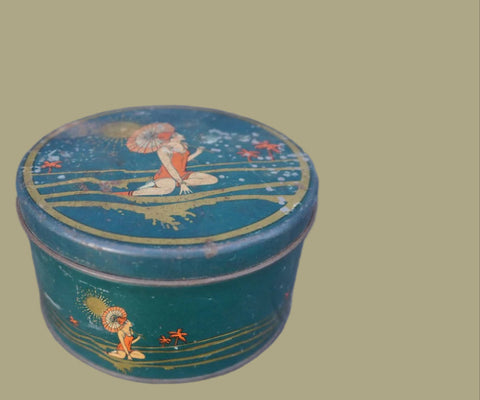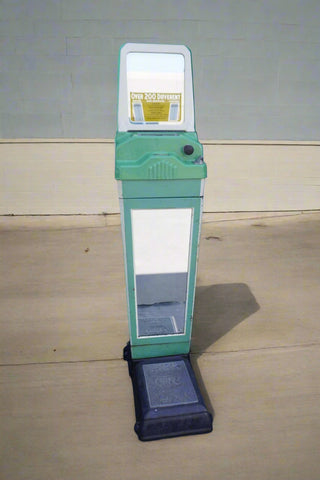Paul Krempel for Frempel and Erkes Architects - Gouache Rendering of Architectural Commission Private Residence 1924
An exquisitely rendered view of a proposed private home, this is a rare survival from the career of John Paul Krempel, one of L.A.s founding architects, and, for added interest, executed by his son, the noted athlete and artist Paul W Krempel, who would go on to work in the movie studios. The firm died with the senior Krempel in 1933, but not before he had left his mark on the rapidly burgeoning city of Los Angeles. Many of his buildings still stand, protected landmarks. As architectural renderings go this is of the first order, the proposed home, mansion really, shown in fine detail and placed in its setting, the vision of an architect who had not failed to move with the times, the whole thing now beautifully evocative of the Jazz Age. We can only hope this residence still stands, in Hancock Park, or San Marino.
Gouache on board, 17" x 17", a fold in the lower left corner.
Artist and Olympic athlete, Paul W. Krempel competed in gymnastics for the United States at the 1920 Antwerp and 1928 Amsterdam Summer Olympics. Between 1919 and 1930, he won A.A.U. titles in the vault, floor exercises, rings and parallel bars, and in 1930 he was chosen to be captain of the Olympic team. He later became an artist and worked for the motion picture studios in Los Angeles. Son of architect John P. and Millie (Kuhrts) Krempel.
John Paul Krempel (October 19, 1861 – September 14, 1933) was a German-born American architect. He designed private residences and commercial buildings in Los Angeles, including the old Los Angeles Times building. Some houses he designed are Historic Cultural Los Angeles City Landmarks.
Krempel became an architect in Los Angeles. In 1898, he designed The Bivouac for Harrison Gray Otis in the Mission Revival architectural style at 2401 Wilshire Boulevard near MacArthur Park; it was demolished in 1954. Other private residences he designed were the August Winstell House at 1147 South Alvarado Street in the Tudor Revival architectural style in 1907, or the G. Wrenner House at 2080 West Adams Boulevard and the August Rothenpiller House in San Pedro in 1908. Another house he designed in the Victorian Craftsman architectural style, located at 1326 South Manhattan Place, is a Historic Cultural Los Angeles City Landmark. He designed the old building of The Los Angeles Times on Broadway in the Richardsonian Romanesque style. He also designed the Engine Co. No. 28 firehouse.
With architect Walter E. Erkes, Krempel designed the Agricultural Chemical Works Warehouse on the corner of Macy Street and Mission Road in 1908, the German Hospital in Boyle Heights, Los Angeles, and a three-story building at South Spring Street and 3rd Avenue in 1911.] They also designed the Turnverein Germania Club on the corner of West Washington Boulevard and Toberman Street in Los Angeles in 1925-1926. It was renamed the Los Angeles Turner Club in 1943, and demolished in 1976. Another building they designed, the Eastside Brewing Company Brewery Building at 2100 North Main Street, is a Historic Cultural Los Angeles City Landmark. Additionally, they designed buildings outside Los Angeles, like the American Beet Sugar Company Adobe Housing Building in Oxnard, California in 1918, or the Bank of Italy National Trust and Savings Association Building at Garfield Street and East Main Street in Alhambra, California in 1928.











